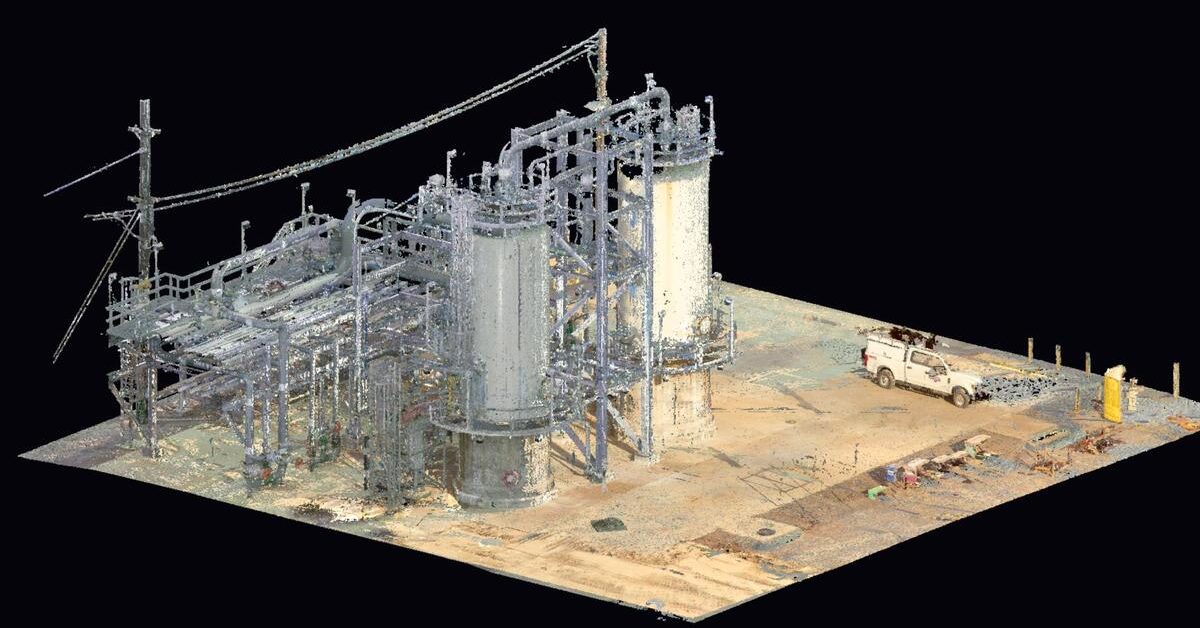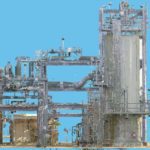In this article, we’ll explore the growing importance of digital twin technology in the oil and gas industry. We’ll also go over some of the benefits of using digital twins in this sector and highlight some notable use cases.
The global oil and gas industry continues to play a crucial role in the global economy. Oil and gas remain the world’s primary fuel sources and more than half of the world’s electricity is generated from fossil fuels.
Due to the extreme volatility of oil prices—and geopolitical challenges like the China-United States trade war—key industry players are calling for the digital transformation of the fossil fuel industry. Digital transformation is not only needed to maximize production efficiency, but also to boost operational value, reduce operational costs, and allow energy producers to respond more swiftly to market changes.
Some of these cutting-edge technologies include machine learning (ML), artificial intelligence (AI), the Internet of Things (IoT), cloud computing, and digital twin technology.
Oil and Gas Digital Twin Technology: What Is It?
A digital twin is a virtual representation that serves as the real-time digital counterpart of a physical object, process, or service. Anything that exists in the real world can be reproduced digitally in the form of digital twins. These include oil and gas assets like heat exchangers, pipelines, turbines, pumps, gathering systems, and entire oil production plants.
All of the relevant information about an asset is captured using digital twin technology—including troubleshooting procedures, schematics, maintenance records, and operating instructions. This data is stored in the cloud for easy retrieval and updating.
Once an asset has been digitally twinned, an employee or consultant simply needs to point a connected mobile device at the asset and gather all of the relevant information. This data can be divided into the following: engineering content, maintenance history, physical constraints, and operating parameters.
- Engineering content – This includes configurations, specifications, and diagrams that map out the physical asset in digital terms.
- Maintenance history – This includes the parts installed and procedures performed. Maintenance history should provide insight into the ability of an asset to deliver optimal performance and alert personnel to any required maintenance action.
- Physical constraints – This includes throughputs, pressures, and operating capacities. Physical constraints refer to any factor that restricts how each physical asset behaves.
- Operating parameters – This includes consumables, by-products, and emissions. Operating parameters refer to any factor that constrains the asset’s performance.
Digital twins are employed in the oil and gas industry for a number of reasons—including designing platforms and similar installations, monitoring equipment health (prognostics and diagnostics), and modeling process and control.
The ultimate objectives of using a digital twin in the energy industry are to optimize production, detect equipment issues and failures before they occur, uncover new opportunities for process improvement, and reduce unplanned downtimes.
While the concept of a digital twin has been around since 1991, recent technological advances—like analytics, cloud computing, advanced simulations, and augmented/virtual reality—have accelerated the adoption of digital twin technology in various industries.
How Can Digital Twin Technology Benefit the Oil and Gas Industry?
Digital twin technology allows oil and gas companies to obtain real-time insights into their operations, resulting in improved processes and operational efficiency. Case in point: a mere 0.1% increase in production due to improved processes and operational efficiency can yield millions of dollars in additional revenue.
Despite having numerous technologies (including advanced connectivity) at their disposal, many oil and gas companies have yet to fully leverage these technologies to drive efficiencies and profitability, notes a report from McKinsey & Company.
Listed below are some of the additional benefits that can be derived when oil and gas companies harness digital twin technology and advanced connectivity.
Save Money
Offshore oil and gas operators could potentially reduce costs, including capital and operational expenditures, by 20% to 25% per barrel by using advanced connectivity to deploy digital tools and analytics (including digital twin technology).
Overall, the adoption of digital twin technology in the oil and gas sector is being driven by its proven cost-saving potential. According to GEP, using digital twins to simulate offshore oil and gas projects could save more than €2 million on project costs for assets with topsides of 10,000 tons. This estimate increases to more than €8.5 million for assets with topsides of up to 40,000 tons.
Using digital twin technology could help oil and gas companies save an estimated 9% to 15% on total decommissioning project costs, according to GEP.
Optimal Performance
According to McKinsey & Company, making full use of advanced connectivity to optimize drilling and production throughput, as well as improve field operations and maintenance, could add another $250 billion worth of value to the oil and gas industry’s upstream operations by 2030.
Of this value, between $160 and $180 billion could be generated using existing infrastructure. An additional $70 billion could be generated with the help of low-earth orbit (LEO) satellites and 5G technologies.
When combined with process simulations and advanced analytics, digital twins can optimize processes and facilitate predictive maintenance.
Analytics utilizes statistical models, machine learning technology, and advanced pattern recognition to model an asset’s operational profile and processes. This also allows it to predict an asset’s future performance. Operators can then recommend timely actions to reduce unplanned downtimes, as well as optimize operating conditions.
Workplace Safety
By utilizing wearable technology—such as smart heads-up displays (HUDs), smart workwear (e.g. smart hard hats, smart biometric vests, and smart boots), as well as body-mounted sensors—oil and gas companies can create safer work environments for their workers.
These smart wearables are virtually mirrored by digital twins. The resulting real-time monitoring system can be used to track exposure to hazardous environments, eliminate operator fatigue as an incident root cause, and help operators get real-time critical info about the plant floor during emergencies.
More Effective Decision Making
Utilizing a digital twin can positively impact operational efficiency, as well as the reliability and agility of the oil and gas sector. As a result of this digital transformation, oil and gas companies no longer have to rely on the expertise of their aging workforce to manage predictive maintenance and production imbalances.
Live Monitoring
The key to running a successful digital twin is a robust information management system that combines a centralized data repository with enterprise-level information access and visualization.
This setup allows users to conduct seamless live monitoring, as well as access updated critical info and operational data about assets throughout the entire asset lifecycle.
Examples of Digital Twins in the Oil and Gas Industry
Echo by Equinor
Equinor, a Norwegian energy company, recently launched a digital twin solution called Echo. Echo is used to retrieve and visualize data from various cloud-based databases.
Equinor has placed Echo in at least ten assets, including the Johan Sverdrup oil field in the North Sea, the Johan Castberg oil field in the Barents Sea, and the Mariner development in the North Sea.
Harnessing digital solutions like Echo has allowed Equinor to expand the use of the “digital field worker”. This strategy allows issues to be resolved offshore and workers no longer need to return onshore to obtain signatures from key decision makers.
Apex by BP
BP has launched its own digital twin solution, known as Apex, to simulate and monitor its oil and gas production. Apex is designed to create virtual copies of BP’s production systems around the world.
Apex makes use of integrated asset models to optimize production. It’s also a formidable surveillance tool that can be used in the field to spot issues before they have a major impact on production.
According to BP, the Apex system added 30,000 barrels of additional oil and gas production globally in 2017.
Crude Refinery Laser Scan & Digital Twin by Fenstermaker
Fenstermaker—a leader in the use of high-definition laser scanning, interactive 3D modeling, and unmanned aerial data collection and imagery for the energy market—recently completed a major laser scanning project. This project consisted of approximately 5,200 laser scans.
The purpose of this extensive scanning was to capture enough data to create isometric drawings, piping and instrumentation diagrams (P&IDs), and a digital twin model for a unit without any as-built records.
Aside from harnessing digital twin technology and advanced laser scanning, Fenstermaker also used LiDAR mapping to create seamless data sets to map every angle of a given facility.

